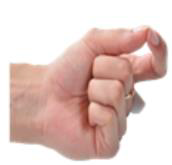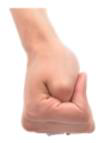In the past, meditation was known to be a process of sitting down quietly at one place, trying to engage oneself in one thought, and eventually trying to be in a thoughtless state of mind. Today, it is a quite common understanding that meditation need not be done sitting at one place at a certain time. Even the process of cooking a meal in a happy state of mind and with complete involvement of the mind can be a process of meditation.
The middle path will be probably neither sitting idle and trying to reach a thoughtless mind, nor doing an activity with complete devotion and trying to reach a blissful mind.
This middle path is what is active meditation. Here, we do sit or lie down in one place but get involved in the meditation process through certain subtle activities.
When one is suffering from a chronic disease, and going through needful medical treatment, it becomes vital that the immune defense is strong, willpower is boosted, and quality of life is not compromised. This is where the active meditation technique plays an important role. Since the person is actively involved in the process of meditation, it becomes easier to keep the mind away from bodily pains.
- As the first step, loud, audible sounds are produced after every deep inhale, and thus resonance is developed. The sounds produced are A U and M. Sound A has the lowest frequency, the sound U has the middle, and sound M has the highest frequency. This loud chanting creates resonance in the body thus helping the body cells relax. The low frequency A chanting helps relax the body below the naval center where body frequency is also low. The middle-frequency U chanting helps relax the body between the throat and the naval center where body frequency is also at the middle level. Lastly, the highest frequency M chanting relaxes the head and neck region where body frequency is also at its highest.
- As the second step, the same three sounds are produced inside the mind and again the same resonance is developed. This mental chanting also leads to the same pattern of resonance waves and helps relax the body cells.
- As the third step, AUM is repeated inside the mind and this mental chanting further relaxes the entire body.
By the end of these three steps, the development of resonance brings the mind to the present moment and the mind can feel the silence. Now the next steps help increase inner sensitivity as well as inner awareness.
- Breath awareness – breath is observed at the tip of the nose. Then it is observed inside the nostrils. This simple observation and watching of breath lead to a reduction in any imbalance in right and left nostril breathing. The imbalance is further reduced by performing 9 rounds of alternate nostril breathing exercise.
- Awareness and relaxation – Pointed awareness is felt at tip of the nose, then linear awareness is felt through the air path from the nose tip to the throat region, then surface awareness is felt through the inner surface of the airpath. This deeper and deeper awareness of breath increases sensitivity for internal organs. This step is concluded by Bhramari chanting or making a humming bee sound to have three-dimensional awareness as you recognize the resonance throughout the body due to the humming bee sound’s vibrations.
- Recognition of nerve impulses with the help of mudras –
- Chin mudra –
 At the contact point of fingertips, the pulse is observed. Then heartbeats are observed. Then synchronization between the two is observed. By opening the fingers and touching them again and again, nerve impulses traveling from hand to brain are observed.
At the contact point of fingertips, the pulse is observed. Then heartbeats are observed. Then synchronization between the two is observed. By opening the fingers and touching them again and again, nerve impulses traveling from hand to brain are observed. - Chinmay mudra –
 Same process is followed in this mudra and nerve impulses are observed.
Same process is followed in this mudra and nerve impulses are observed.
- Adi mudra –
 During the same process, a gush of nerve impulses is observed.
During the same process, a gush of nerve impulses is observed.
- Namaskar mudra –
 Again the same process is followed to feel the gush of nerve impulses.
Again the same process is followed to feel the gush of nerve impulses.
- Chin mudra –
With every mudra, the speed of nerve impulses travelling to brain goes on increasing. Again, the step is concluded by Bhramari chanting or making humming bee sound. Now inner awareness and sensitivity move from the gross to the subtle.
- Lastly, a resolve is repeated in mind nine times along with the inhalation and exhalation process. Resolve is nothing but a positive thought made of a minimum number of words. One example can be – I am blissful.
I would give complete credit of this active meditation technique to our Guru Dr H R Nagendra, the founding trustee of the first yoga university in America – Vivekananda Yoga University https://vayuusa.org/. I learned the technique during my master’s degree program in Yoga Therapy at this University.
Feel free to contact me if you want to learn more about and practice it along with me to experience the benefits mentioned.
Anu Buzruk
Yoga Therapist
